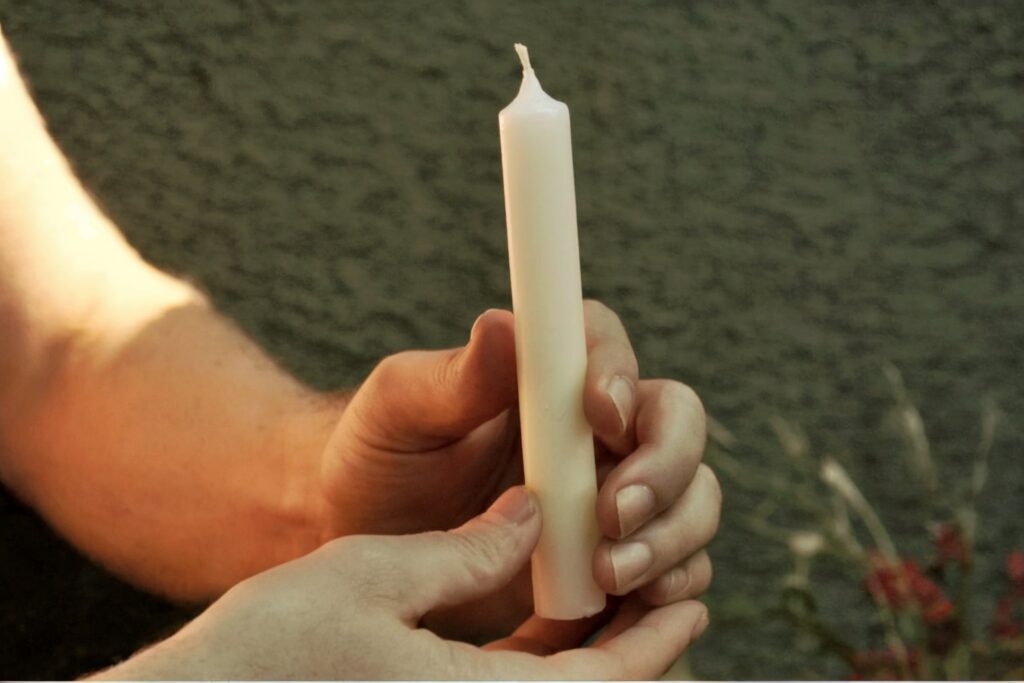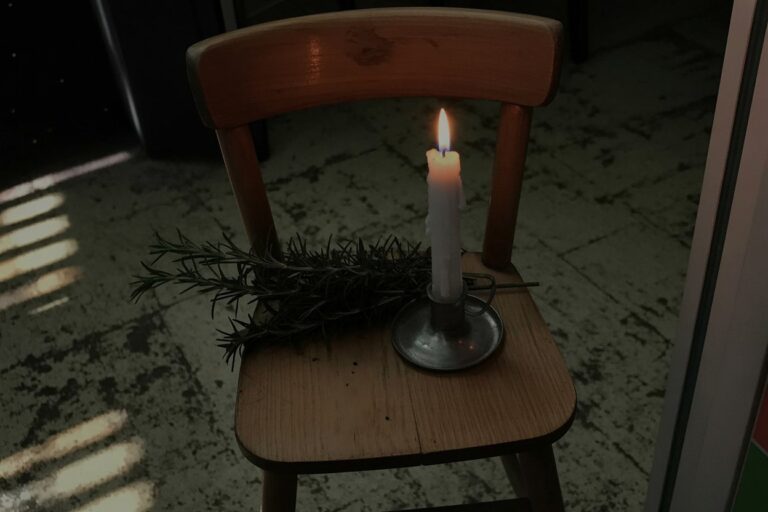Root Chakra Basics: What It Is and How to Activate It
Please note that posts on this site may contain affiliate links
Your body has its own internal GPS for feeling safe. When you sense danger, your muscles tense, your breath quickens, your attention narrows. When you feel secure, your shoulders drop, your breath deepens, you can actually think clearly again. This isn’t abstract. It’s your nervous system talking.
The root chakra, known in Sanskrit as Muladhara, gives you a practical framework for working with these survival responses. Located at the base of your spine, this first energy center maps directly to where your sacral and coccygeal nerve plexuses sit. These nerve bundles control your lower body, pelvic floor, and gut. When traditional texts talk about the root chakra governing survival, security, and grounding, they’re pointing to real anatomical structures that handle real physiological functions.
You’re not imagining things when you feel sensations at the base of your spine during stress or safety. That’s your body’s actual threat detection system at work.
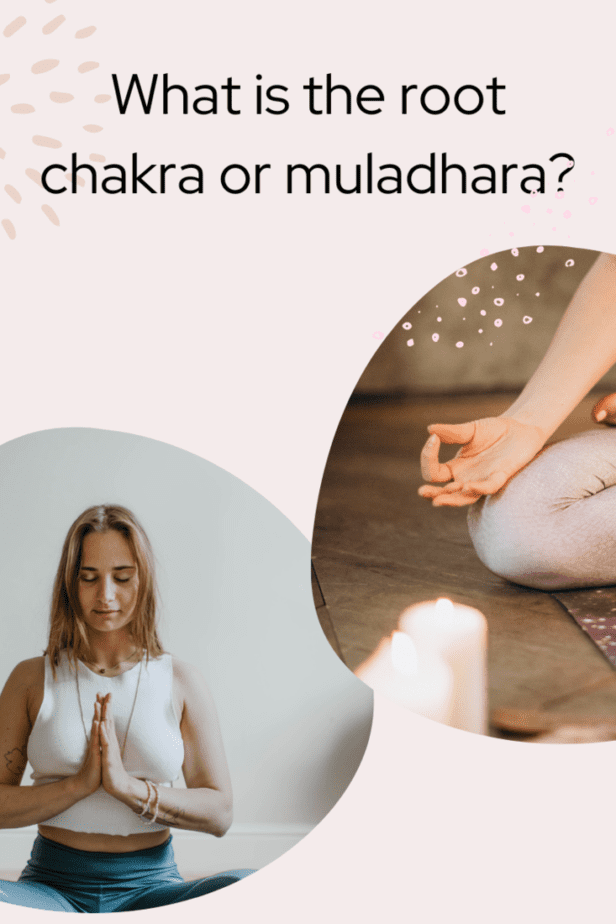
Your Nervous System’s Safety Barometer
Here’s what actually happens when people say your root chakra is “blocked” or “out of balance.” Your nervous system has three main states. The first activates when you sense threat: heart rate spikes, digestion shuts down, muscles prepare to fight or flee. The second kicks in when threat feels overwhelming: you freeze, shut down, disconnect. The third state, the one associated with a balanced root chakra, only comes online when your nervous system registers safety.
This third state is what polyvagal theory calls ventral vagal activation. Your heart rate variability increases. Your breath deepens naturally. Your digestive system works properly. You can think, plan, and connect with others. The traditional language of “opening your root chakra” and the scientific language of “activating your parasympathetic nervous system” describe the same shift in your body.
When you feel anxious, ungrounded, or constantly on edge, that’s not a spiritual problem. It’s a nervous system stuck in threat mode. Root chakra practices work because they give you systematic ways to signal safety to your body.
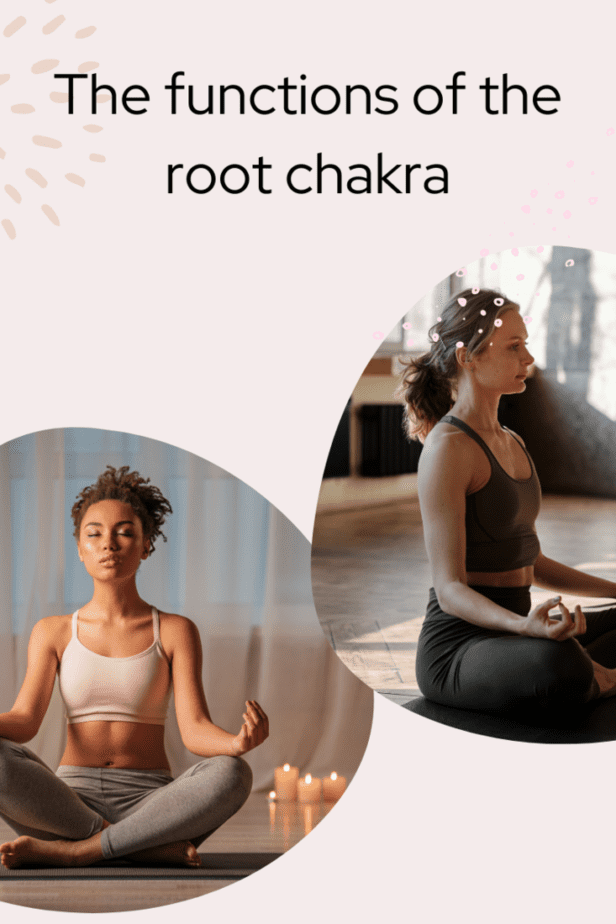
Why Red Actually Works
The root chakra’s association with the color red isn’t arbitrary, even though it is constructed. Different traditions use different color systems. There’s no natural law connecting red to your pelvic floor. But red works as a correspondence because of how your brain processes it.
Red captures attention faster than any other color. Research shows that red-colored stimuli trigger earlier neural responses and hold attention longer in emotional contexts. Your visual system is wired to notice red. Blood is red. Fire is red. Both signal “pay attention, this matters for survival.”
When you visualize a bright red ball of light at the base of your spine, you’re not just imagining things. You’re using your visual attention to direct your interoceptive awareness to a specific body region. The red visualization creates the attentional anchor. Your focused awareness creates the physiological effect.

Ignite your fires…
Ignite your magical journey and harness the zodiac’s power with ‘Fire Magic Through The Year: Elemental Magic With The Zodiac‘ for only $6.99—let the stars and fire guide your path to transformation.
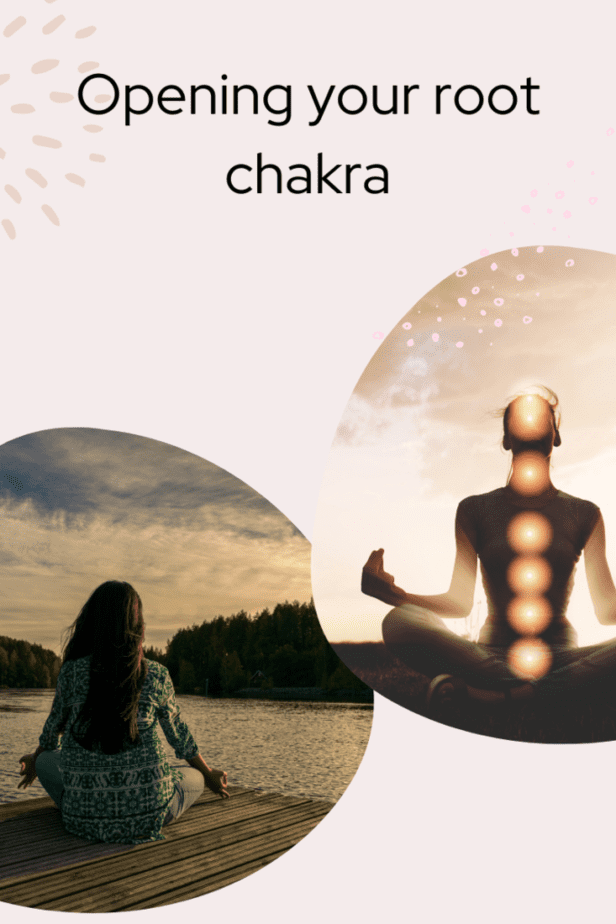
Grounding as Nervous System Regulation
Walking barefoot on grass isn’t just symbolic. When your bare skin contacts the earth, you’re completing an electrical circuit. Your body carries a slight positive charge from metabolic processes. The earth’s surface maintains a negative charge. Direct contact allows electron exchange.
Multiple studies on what researchers call “earthing” or “grounding” have documented measurable physiological changes: reduced inflammation markers, improved heart rate variability, normalized cortisol rhythms, and subjective reports of feeling more centered. The mechanism involves both the electrical exchange and the rich sensory input your feet receive from varied terrain textures, temperatures, and surfaces.
Your feet contain thousands of nerve endings. When you walk barefoot, you’re flooding your nervous system with proprioceptive and tactile information. This sensory data grounds you quite literally in your physical location. It also activates the part of your brain that handles spatial awareness and body position.
Root chakra work emphasizes connecting to the earth element because the metaphor guides effective practices. When you focus on your feet, legs, and the base of your spine, you’re strengthening your felt sense of where your body is in space. You’re reinforcing the foundation that allows everything else to function.
Try this: Stand barefoot right now. Notice the temperature of the floor. Feel where your weight distributes across each foot. Rock slightly forward and back until you find stable center. That awareness you just created? That’s active grounding. Do it regularly, and you’re training your nervous system to find its baseline more easily.
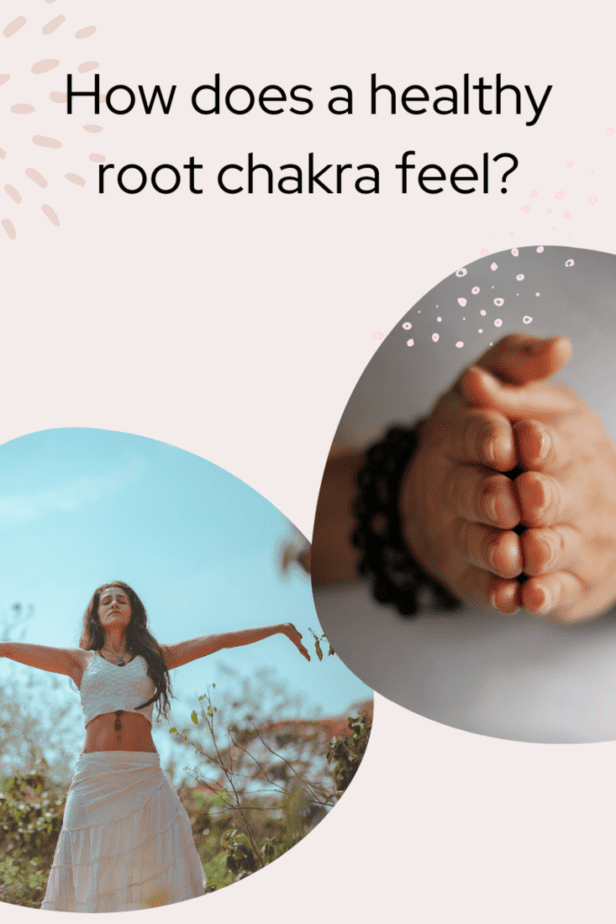
Breath, Attention, and Activation
Your breath is the only part of your autonomic nervous system you can directly control. This makes it a practical bridge between your conscious intention and your automatic survival responses.
When you practice slow, deep breathing focused on your belly and pelvic floor, several things happen simultaneously. Your diaphragm moves fully, massaging your vagus nerve. This nerve, running from your brainstem through your torso, is the main channel of your parasympathetic nervous system. Stimulating it through breath sends safety signals throughout your body.
The visualization component isn’t optional or decorative. When you imagine breathing into the base of your spine, you’re directing your interoceptive attention to that region. Interoception is your sense of your body’s internal state. Most of the time, you filter out the constant stream of sensory information from your organs, muscles, and nervous system. Focused attention removes that filter temporarily.
This is why breathwork combined with visualization creates stronger effects than either practice alone. The breath creates the physiological shift. The focused attention amplifies your awareness of that shift. Together, they train your nervous system to access calm states more readily.
Start simple: Sit comfortably. Place one hand on your belly. Breathe in slowly through your nose for a count of four. Feel your belly rise. Hold for four. Exhale through your mouth for six. Feel your belly fall. The longer exhale is key. It activates your parasympathetic system more strongly than the inhale.
As you breathe, place your attention at the base of your spine. You don’t need to visualize anything elaborate. Just notice that area. After several breaths, you might feel warmth, tingling, or gentle pressure. Those sensations are real.
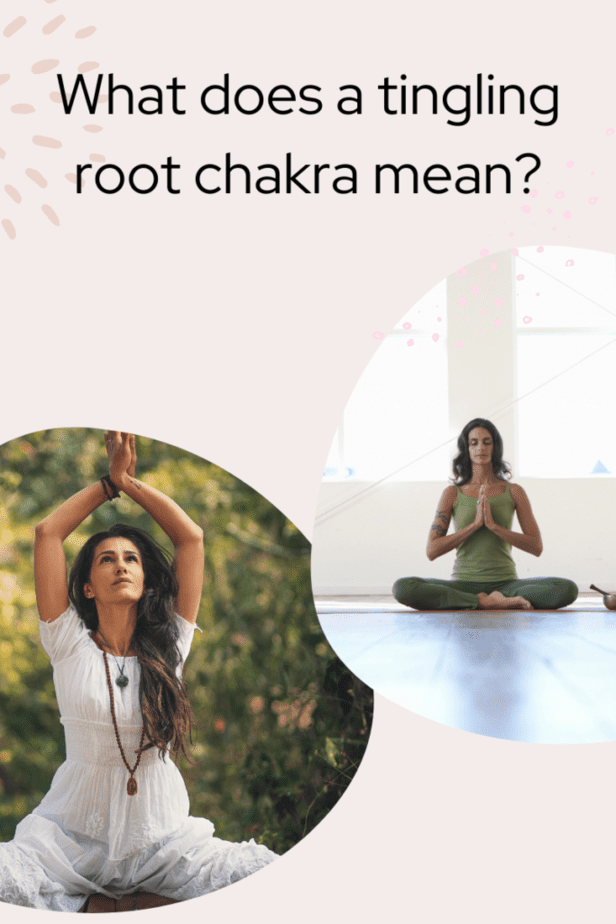
What Tingling Actually Means
Many practitioners experience physical sensations when working with their root chakra: tingling, warmth, buzzing, pressure, or a sense of energy moving. These are not supernatural phenomena. They’re your interoceptive system doing exactly what it’s designed to do.
Your body constantly generates sensory information. Nerve impulses fire. Blood flows. Muscles micro-adjust. Temperature fluctuates. Most of this happens below conscious awareness. Your brain filters it out so you can function without being overwhelmed by internal noise.
When you focus sustained attention on a specific body region, you’re temporarily removing that filter. You start perceiving sensory information that was always there but usually ignored. The tingling you feel is actual neural activity. The warmth is actual blood flow. The buzzing might be muscle micro-tremors or the rhythmic firing of nerve bundles.
Interoception research confirms that people vary widely in how much internal sensation they naturally perceive. Some people have high interoceptive sensitivity and feel subtle body changes easily. Others have lower sensitivity and need practice to develop awareness. Both are normal.
The more you practice directing attention to specific body regions, the more readily you perceive sensations there. You’re not creating energy. You’re training your awareness to notice what your body is already doing. This is a real skill with measurable effects on emotional regulation, stress response, and decision-making.
When your root chakra “tingles,” that’s your nervous system becoming more active in that region in response to your focused attention. It means your practice is working.
Practical Root Chakra Work
Physical Practices
Yoga poses that engage your lower body: Mountain pose, warrior poses, chair pose, and squats all strengthen the legs and pelvic floor while demanding balance and proprioceptive awareness. You’re simultaneously building physical stability and training your nervous system to register that stability.
Lower body strengthening: Walking, running, hiking, dancing, or any activity that uses your legs creates a felt sense of power and capability in your foundation. This isn’t metaphorical. Stronger legs literally support you better. Your nervous system registers this increased capacity.
Pelvic floor awareness: Simple kegel exercises or bandha work in yoga help you develop conscious control over muscles you usually can’t sense. This builds the internal awareness that grounds you in your body.
Breath and Attention Practices
Deep diaphragmatic breathing: Focus on belly breathing rather than shallow chest breathing. Place your attention at the base of your spine with each inhale and exhale. Start with five minutes daily.
Grounding visualization: Imagine roots growing from the base of your spine down into the earth. This isn’t just imagination. The visualization helps your attention settle into your lower body and creates a felt sense of connection to the ground beneath you.
Body scan starting from feet: Slowly move your attention from your feet up through your legs to your pelvic floor and base of spine. Notice temperature, tension, tingling, or pressure without trying to change anything. Pure awareness builds interoceptive skill.
Environmental and Sensory Practices
Barefoot time: Walk on grass, dirt, sand, or varied surfaces. Let your feet receive and process sensory information. This regular grounding practice doesn’t require any special technique beyond removing your shoes and paying attention.
Red color exposure: Wear red clothing, place red objects in your space, or visualize red when you need to feel more present and activated. The color correspondence serves as an attention anchor.
Crystals as touchstones: Red jasper, garnet, or black tourmaline can function as physical reminders to check in with your root chakra. Hold one while breathing, and it becomes an anchor for your practice. The stone itself doesn’t contain special energy. Your repeated association between the stone and your practice creates a conditioned response.
Signs Your Root Chakra Is Balanced
You’ll know your root chakra work is effective when you notice:
You can find calm relatively quickly after stress or upset. Your baseline returns faster. You’re not stuck in prolonged anxiety or freeze states.
Your body feels like a safe place to be. You’re not constantly dissociated or checked out. You can feel your feet on the ground, your weight in the chair, your breath moving.
You meet basic needs without panic or drama. Getting food, handling money, and managing daily logistics feels manageable rather than overwhelming.
Your gut works properly. Digestion, elimination, and appetite regulate themselves. This makes sense because the nerves serving your gut connect to the same plexuses as your root chakra.
You can take action when needed. You’re not frozen or endlessly deliberating. When a real threat appears, you respond appropriately. When there’s no threat, you rest.
You trust that you can handle what comes. Not because you’re special or invulnerable, but because you have evidence from your own experience that you’ve handled things before and can again.
These aren’t mystical states. They’re the natural result of a regulated nervous system and strong interoceptive awareness. Root chakra work gives you a systematic framework for developing both.
The Bridge Between Frameworks
The root chakra functions as a practical translation between ancient wisdom and modern neuroscience. The traditional system noticed patterns in how human bodies respond to safety and threat, then created a symbolic framework to work with those patterns. The symbols aren’t the truth. They’re a technology for accessing the truth.
Your base of spine does house nerve plexuses critical for survival functions. The color red does capture attention and signal vitality. Grounding practices do create measurable changes in nervous system activity. Breath work does stimulate your vagus nerve and shift your state.
The chakra system maps these relationships systematically. It gives you a language and a method. You can choose to work with the traditional framework, the scientific framework, or both. What matters is that you actually do the work.
Your root chakra isn’t blocked by past trauma or bad karma. Your nervous system is stuck in a threat state because it learned that the world is dangerous. Your work is to teach it something new: that you can be safe, that you can trust your foundation, that you can rest when rest is appropriate and act when action is needed.
Start where you are. Take three slow breaths right now, placing your attention at the base of your spine. Notice what you feel. That’s enough for today.

Full Moon Magic with Hekate: An Exclusive Guide
Unlock the transformative power of Hekate during the full moon for just $4.99 with ‘Working With Hekate During The Full Moon‘—awaken your spirit, harness new opportunities, and connect deeply with the goddess of witchcraft.
How to Bless White Candles for Yule Using Grocery Store Materials
White candles show up at grocery stores for a dollar. Unscented tapers, plain pillars, bags…
Traditional Yule Cookies with Cinnamon, Nutmeg, and Bay Leaf for Solstice Prosperity Magic
You’re standing in a warm kitchen making cookies while the world outside reaches its darkest…
Tips For Working With Lucifer During The Winter Solstice
Winter solstice timing makes sense for working with Lucifer when you look at what’s actually…
Stolas Altar Setup Guide: Study Desk for Goetic Teaching Work
Stolas teaches by training you to look harder. You’re studying moon phases for class and…
How to Build a Working Altar for Goetic King Bael
Bael appears in grimoires as the first king of the Goetia, ruling sixty-six legions. The…
How King Paimon Teaches Arts and Sciences Through Joy and Precision
The Ars Goetia describes the Ninth Spirit, King Paimon, arriving on a dromedary with a…


